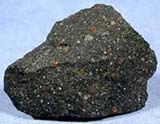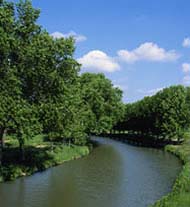Latest News

Towards highly integrated telecommunication function
Philips and DIMES found the Philips Associated Centre (PACD) at DIMES
Towards highly integrated telecommunication function
Philips has chosen TU Delft`s Institute for Micro-electronics en Submicron-technology (DIMES) to host a large research programme. The goal of this Philips Associated Centre at Dimes (PACD) is research on the integration of complete telecommunication systems into silicon technology, leading to drastic miniaturisation and reduced production costs. The six year

`Plant aspirin’ offers hope against crop diseases
The discovery by French scientists that cotton plants produce a kind of ‘plant aspirin’ in response to bacterial infection could lead to new ways of fighting crop diseases.
Researchers led by the French Institute of Research for Development (IRD) found that salicylic acid — which has a chemical structure very similar to that of aspirin — and jasmonate acid are both released by cotton plants in response to infection by the bacterium Xanthomonas .
The two plant hormones play

Shooting stars sugar coated
Meteorites could have sweetened the earliest life.
Sugar from space may have nourished the first life on Earth. Two meteorites contain a range of polyols, organic substances closely related to sugars such as glucose 1 .
George Cooper of NASA’s Ames Research Center in California and co-workers have found these compounds in the Murchison meteorite, which fell over the Australian town Murchison in 1969, and in the Murray meteorite, that fell to Kentucky in 1950.

Conservationists patch it up
Urban wildlife may not use green corridors.
Green corridors do little to aid wildlife, say UK ecologists. Their discovery that isolated wild ground contains just as many plant species as do patches linked by continuous greenery casts doubt on current conservation priorities.
“The proportion of organisms that use [wildlife corridors] is exceedingly small,” says botanist Mark Hill of the Centre for Ecology and Hydrology in Monks Wood. Only vertebrates seem to benefit, he says.

Protein Structure Reveals Elegant Water Flow Solution
The structure of one of the basic members of the cell-membrane water-channel family, a protein called aquaporin 1 (AQP1), has been determined to a resolution of 2.2 angstroms (22 billionths of a meter).
The structure reveals the elegantly simple means by which AQP1 can transport water through the cell membrane at a high rate while effectively blocking everything else, even individual protons, the nuclei of hydrogen atoms.
Biophysicist Bing Jap led a team from Lawrence Berkeley Nat

The Science Of Ball Lightning
A spectacular phenomenon
This theme issue of Philosophical Transactions A (a Royal Society journal) deals with the phenomenon of ball lightning, a rarely seen and slow-moving luminous phenomenon usually associated with thunderstorms. A collection of previously unpublished sightings is presented, including close-up encounters describing the detailed internal structure of the balls. Many of these observations are from scientifically or technically trained people, probably doubling the n











